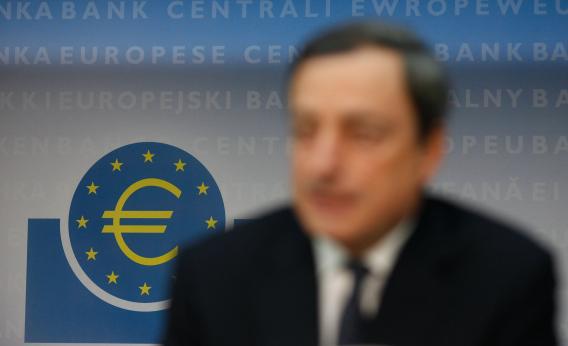I’ve come to believe that the best book about the global recession of 2008-present is Liaqart Ahamed’s Lords of Finance,: The Bankers Who Broke the World, a history of central banking in the interwar period. The mistakes being made today are not “the same” as the mistakes of the central bankers of the 1930s but the basic plot is the same. This morning the Bank of England team up with the European Central Bank to issue a steady-as-she-goes policy statement, just as the Federal Reserve did yesterday.
To see how disappointing this is, imagine a very different world. This is a world where the US economy is growing at a modest pace but with an unemployment rate of 6.5 percent. That number is slowly falling and the employment-to-population ratio is slowly rising. The United Kingdom is in similar shape. Across the European continent, joblessness is a bit higher than that in a few countries but only absolute cranks are talking about the idea of the eurozone busting up. It’s a world, in other words, where everything is basically fine.
What do monetary policy statements look like in that world?
Well, central banks would be doing nothing. In America, you might get “no change” paired with some lectures about the need to tackle long-term budget deficits. In the U.K., you might get “no change” paired with warnings that the trade deficit might not be endlessly sustainable. In the eurozone, you might get “no change” paired with exhortations to reform labor regulations in the higher unemployment countries. But in terms of basic monetary policy there would be no change because there would be no need for change. When everything’s fine, you don’t change. In the future things might not be fine and then it might be necessary to change, but that’s not now. And to arrive at this “no change” policy you don’t need to know what the interest rate is. All you need to know is that if everything’s fine, you don’t change. Steady as she goes.
Yet somehow this is exactly what the Fed, the ECB, and the Bank of England are doing today. They’re doing exactly what they would be doing if there was no mass unemployment in the United States. They’re doing exactly what they would be doing if there was no double dip recession in the U.K. They’re doing exactly what they would be doing if there was no crisis in the eurozone.
How can it be that “no change” is the right policy response to “everything’s fine” and also the right policy response to today’s circumstances? It can’t be.
